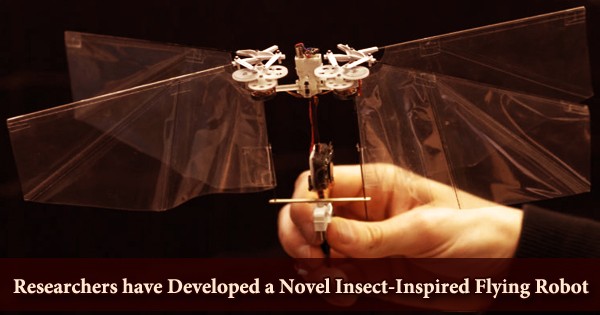Intelligent packaging with sensors that track items such as vegetables across vast distances is a future trend. However, printed and disposable electronics are also problematic: Metals in printing inks are costly, and disposing of them in an environmentally responsible manner is costly and exacerbates the problem of electronic waste.
More precise, faster, and less expensive: For years, researchers all over the world have been working on making electrical circuits using additive methods such as robotic 3-printing (also known as robocasting) – with remarkable success, but this is now becoming an issue. The metal particles used to make such “inks” electrically conductive aggravate the problem of electronic waste. Especially since the amount of trash produced is expected to rise in the future as a result of new types of disposable sensors, some of which are only utilized for a few days.
“There is an urgent need for materials that balance electronic performance, cost, and sustainability,” says Gustav Nyström, head of Empa’s Cellulose & Wood Materials lab. Nyström’s team set lofty aims for developing an environmentally friendly ink: metal-free, non-toxic, and biodegradable. In addition, for practical uses, it is easily formable and resistant to moisture and moderate heat.
The largest challenge was to obtain high electrical conductivity while also forming a gel-like network of carbon, graphite, and shellac. We hope that this ink solution can be utilized for applications in sustainable printed electronics, such as conductive tracks and sensor elements in smart packaging and biomedical devices, or in the field of food and environmental sensing.
Xavier Aeby
With carbon and shellac
According to a recent publication in the journal Scientific Reports, the researchers chose affordable carbon as the conductive substance. More specifically, elongated graphite platelets are combined with microscopic soot particles that make electrical contact between the platelets, all within a matrix formed of a well-known biomaterial: shellac, which is derived from scale insect excretions. It was once employed to manufacture records; today, it is used as a varnish for wooden instruments and fingernails, among other things. Its benefits are precisely aligned with the desired profile of the researchers. Furthermore, it is soluble in alcohol, a cheap solvent that evaporates when the ink is applied, allowing it to dry.
Despite these elements, the endeavor proved difficult. This is due to the fact that the ink, whether used in simple screen printing or with current 3D printers, must exhibit shear-thinning behavior: The ink is viscous while it is “at rest.” However, when subjected to lateral shear stress during printing, it becomes slightly more fluid, similar to a non-drip wall paint that only obtains a softer consistency when applied with the force of the roller. However, when employed in additive manufacturing, such as 3D printing with a robotic arm, this becomes very difficult: A viscous ink would be too harsh, but if it becomes too liquid during printing, the solid components may split and clog the printer’s tiny nozzle.

Tests with real applications
To achieve the specifications, the researchers experimented extensively with the formulation of their ink. They examined graphite platelets of two sizes: 40 micrometers and 7 to 10 micrometers in length. Many adjustments were also required in the graphite and carbon black mixing ratio, because too much carbon black renders the substance brittle, increasing the risk of cracking when the ink dries. The team was able to generate numerous types of the ink that may be utilized in different 2D and 3D printing methods by adjusting the formulation and relative composition of the components.
“The largest challenge was to obtain high electrical conductivity while also forming a gel-like network of carbon, graphite, and shellac,” explains Xavier Aeby, one of the researchers involved. In various steps, the researchers explored how this material behaves in practice. For example, take a look at this tiny test cuboid: 15 stacked grids from a 3D printer composed of fine strands as small as 0.4 millimeters in diameter. This demonstrated that the ink was also adequate for difficult operations like robocasting.
The researchers built a sensor for deformations, among other things, to demonstrate its appropriateness for real-world components: a thin PET strip with an ink structure printed on it, whose electrical resistance altered accurately with varying degrees of bending. Furthermore, testing for tensile strength, water stability, and other qualities yielded positive findings, leading the study team to believe that the new material, which has already been patented, may be used in practice. “We hope that this ink solution can be utilized for applications in sustainable printed electronics, such as conductive tracks and sensor elements in smart packaging and biomedical devices, or in the field of food and environmental sensing,” explains Gustav Nyström.
















